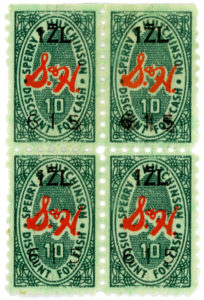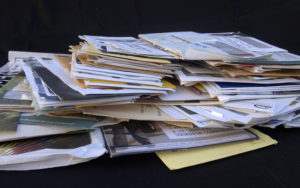Way back in the day — that is, when I was a child — mothers across America paid cash for groceries and came home with a supply of tiny green stamps. We kids would fight for the right to lick the stamps and put them in the S&H Green Stamp books.
Yes, boys and girls, there was a time when stamps had to be licked.
 Green Stamps were the first “trading stamp” rewards program offered in America. Wikipedia says that in the 1960s, The Sperry & Hutchinson Company (S&H) issued more stamps than the U.S. Post Office, and they were available everywhere. In those long ago days, there were no credit cards or computerized cash registers, either. How ever did we survive?
Green Stamps were the first “trading stamp” rewards program offered in America. Wikipedia says that in the 1960s, The Sperry & Hutchinson Company (S&H) issued more stamps than the U.S. Post Office, and they were available everywhere. In those long ago days, there were no credit cards or computerized cash registers, either. How ever did we survive?
It would take months to fill a book… longer to fill 10 or 30. And every month, Mom went through the catalog to pick out her reward. When she made it, when she had the 10 or 30 books she needed to “win,” she’d take that stack of stamp books to the post office. Many weeks later, her prize—a breadbox, a carving knife, or a supply of 100% cotton kitchen towels—would arrive in our mailbox.
All these years later, I mention S&H Green Stamps to a pair of 30-somethings, and they look at me like I’m some sort of dinosaur speaking an alien tongue. Being that I am a generation above them, that may very well be true, and there’s a lesson in that for me, I’m sure.
I Tweet this experience, and the next thing I know I’m being followed by @S&HGreenpoints… the 21st century incarnation of the company founded in 1896.
Here’s the Point:
S&HGreenpoints is a 19th Century company with a 21st Century marketing mind, using social media to monitor what is being said about them and their products, good or bad.
We should all be doing the same. Set your dashboard (TweetDeck or Hootsuite) to show whenever your Twitter name is mentioned. Pay close attention, and follow up on everything. Thanks to the people that mention you favorably, and find out what you can do to change the dynamics with those whose mentions are not so good.
Then tweet about it, please.
 A few months ago I added a new element to my weekend ritual of shredding the name and address labels from mail received during the week. I weigh the bags before I put them in my trash hauler’s recycling container. Last week’s batch was ten pounds, including the unsolicited magazines, flyers, and catalogs on which the labels came.
A few months ago I added a new element to my weekend ritual of shredding the name and address labels from mail received during the week. I weigh the bags before I put them in my trash hauler’s recycling container. Last week’s batch was ten pounds, including the unsolicited magazines, flyers, and catalogs on which the labels came. Drilling 200 feet below the earth’s surface in Vermillion County, Illinois, coal miners found the remains of a 15-square mile fossilized rain forest.
Drilling 200 feet below the earth’s surface in Vermillion County, Illinois, coal miners found the remains of a 15-square mile fossilized rain forest.